
Long-time followers of this blog know that I’ve been researching, writing, and educating on the topic of landscape mulches for over 20 years. So whenever an article comes out in a newspaper or online that directly refutes our current understanding of mulch science, on-line and real-life colleagues quickly call it to my attention. Many times I choose to ignore the article, but when it’s from a highly regarded source with wide readership I feel the need to step in. Before I discuss the problematic statements, I want to explain part of my process in determining whether an expert is really an expert.
Here are two questions I ask:
- Is an expert regarded as an expert in the area of interest by other academic experts?
- Is there published research provided that supports statements that don’t agree with the current body of knowledge?
If the answer to both questions is no, then the source cannot be considered reliable.

To the writer’s credit, she seeks out academic sources for her information. Her source has stellar credentials in researching and educating about compost, but has no publications on mulching or mulch materials (Question #1 = no). And there are source quotes and author statements throughout the article that are not supported with evidence (Question #2 = no).
I’ve identified the misleading or erroneous statements and quotes below with my rebuttals. I have included linked references at the end that address these points in more detail. And we have dozens of posts on mulches in this blog’s archives.

1. “In a forest…there is no big heap, just a layer of an inch or two or three, breaking down and returning to the system.”
Observations of relatively undisturbed forest floors reveal deep layers of woody debris, leaves and needles, and other materials falling from the canopy. Research has shown that a minimum of 3 inches of a coarse textured mulch are needed to restrict sunlight from reaching the soil and prevent weed seed germination. Any less than this will enhance, not prevent, weed growth. Deep layers of wood chips have been repeatedly shown to suppress weeds and enhance the health of desirable plants.
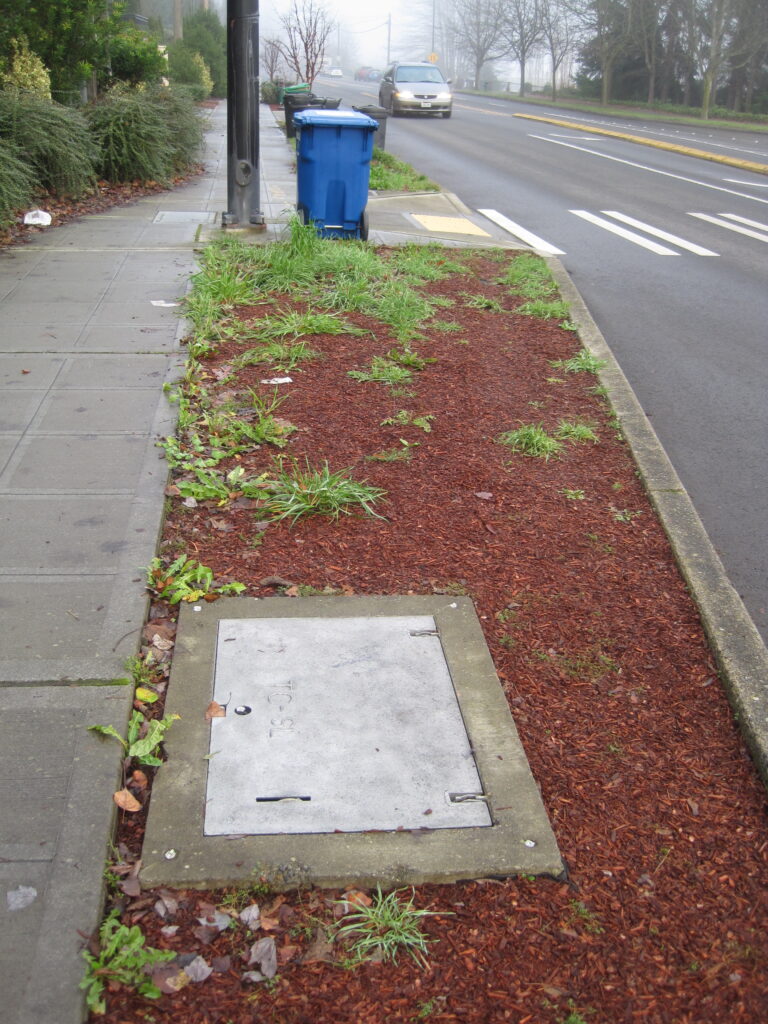
2. “The process releases humates…described as ‘black, gooey liquid’…”
Humates, defined as recalcitrant materials that resist further decomposition, don’t exist in natural landscapes. The only place you find humates are in the lab, where analysis of organic material with an alkaline reagent (pH = 12) produces humus as a byproduct. And on garden center shelves, where heavily marketed humic acids, fulvic acids, and humates are located.
3. “The only difference in mulches, as long as you use organic materials, is the rate at which they decompose”
This needs clarification. Rapidly decomposing mulches release high levels of nutrients in a short period of time; slowly decomposing materials release low levels of nutrients over longer periods of time. Compost falls into the first category, and readily available nutrients from any source can lead to nutrient toxicity in soils and imbalances in plants.

4. “In formal beds…fine- to medium-textured material”
For best oxygen and water movement, mulches should be coarse and chunky. Sawdust and compost, for example, are too finely textured to allow for gas transfer and water movement, plus weeds easily establish on top of compost.
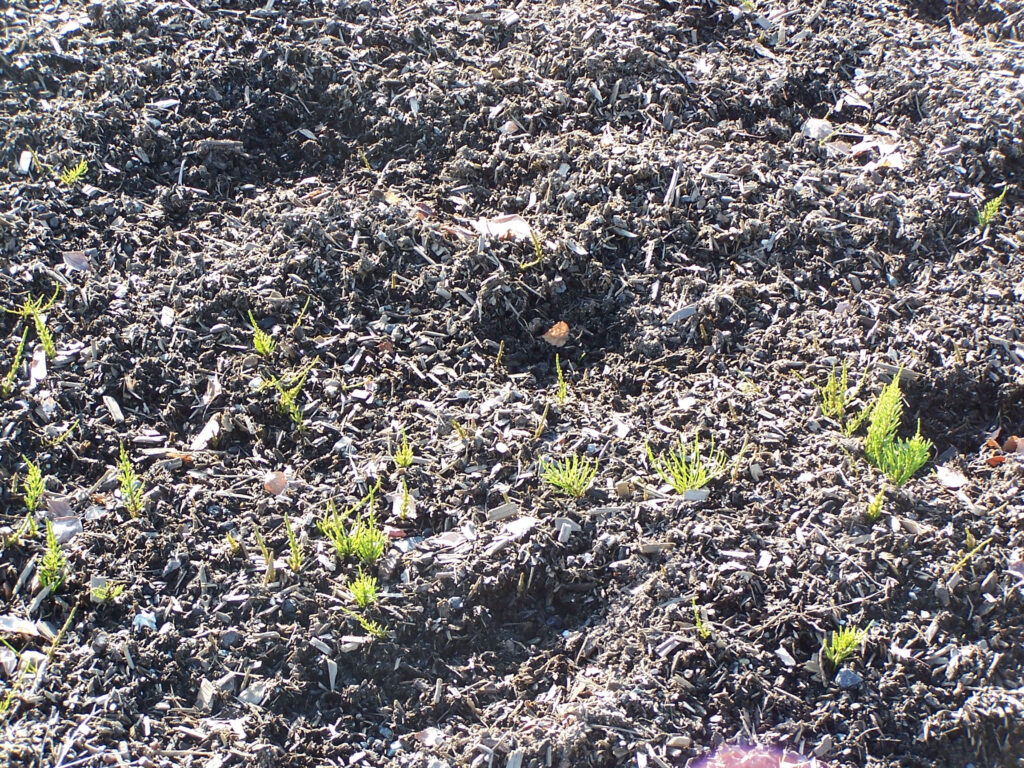
5. “If a bed needs compost, spread an inch before mulching”
This statement needs clarification. The only way you know whether compost is needed is to have the results of a soil test showing an overall low level of nutrients. Then a layer of compost could be added before chips are applied.
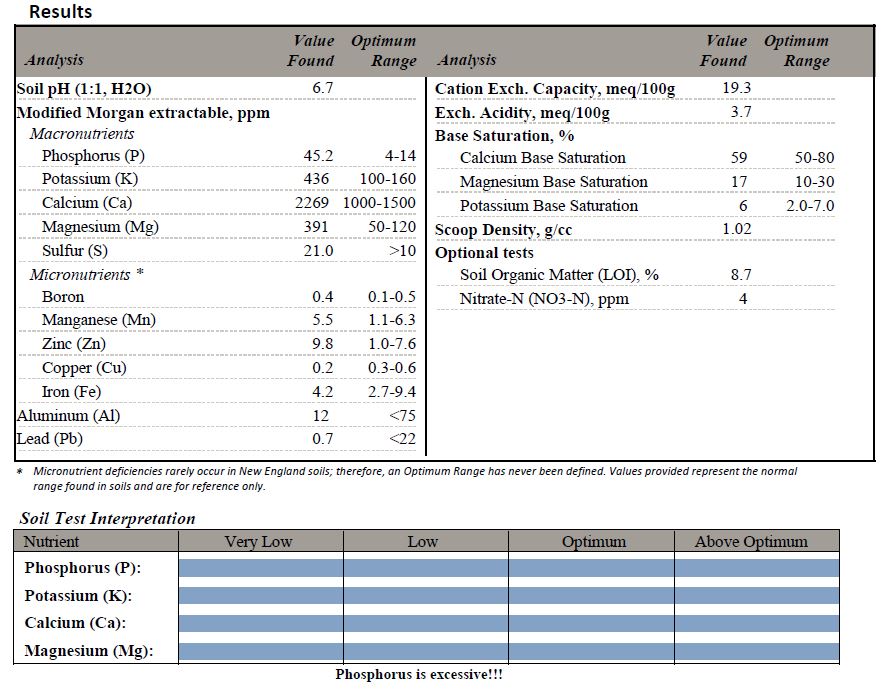
6. “Save…the chunks fresh out of the arborist’s chipper for pathways…Or at least pile them up to mellow before you use them.”
You don’t need to compost your arborist chips. They provide a burst of nutrients during the first month, when leaves are rapidly decomposed. Using older chips is fine, of course, but why waste that early nutrient boost to your soils?
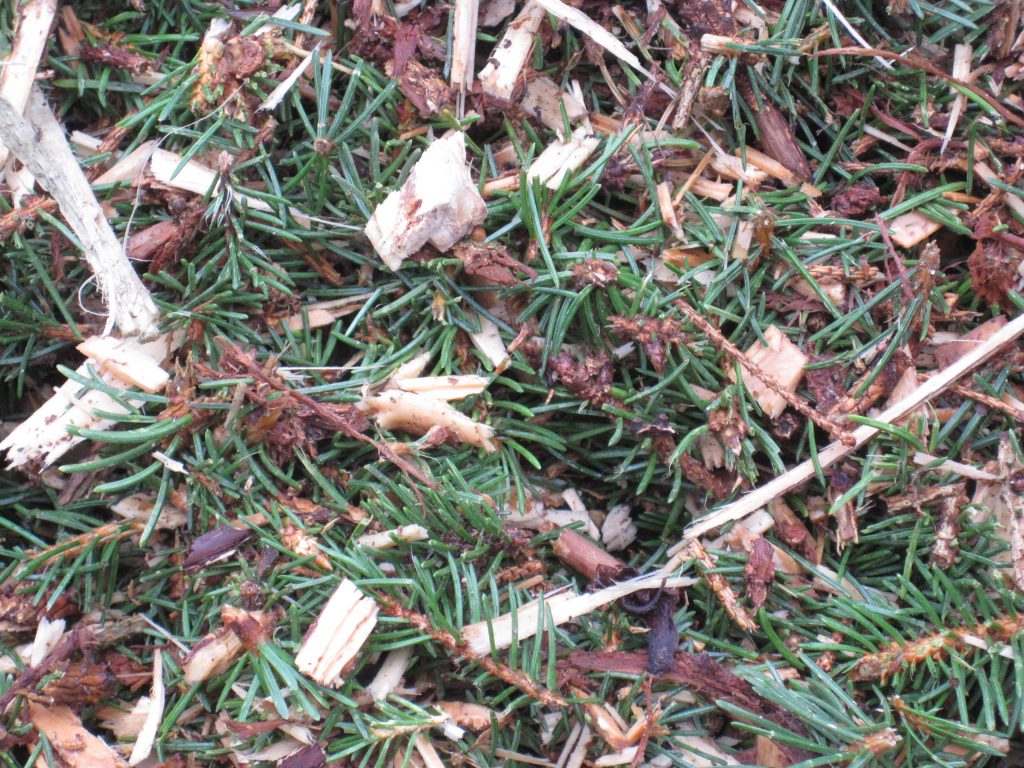
7. “If supplemental fertilizer isn’t applied when your piling on coarse, fresh, carbon-rich wood chips…it can cause some drawdown in soil nitrogen.”
Fertilizer should NEVER be applied unless there is a demonstrated nutrient deficiency, and wood chip mulches do not cause a drawdown in soil nitrogen. This myth has been dispelled by years of research showing no change to soil nitrogen covered with wood chips.

8. “Generally, mulch is applied in ornamental beds at a depth of one to three inches”
See point #1. This is not a science-based recommendation.
9. On volcano mulching: “In addition to promoting bark decay, it causes the tree’s roots to grow up into the mulch layer, rather than down into the soil…the tree may eventually die, and even topple.”
This classic correlation-elevated-to-causation is getting tiresome. There is NO published evidence, anywhere, that proper mulches (i.e., coarse arborist chips) are going to injure bark. They do not cause bark decay. Furthermore, tree roots grow where they have water, nutrients, and oxygen. This might be in the mulch layer. Growing deep into the soil is unlikely (not enough oxygen) unless the soil is excessively sandy or otherwise well drained. Any toppling of trees can be directly correlated with poor planting techniques that prevent roots from contacting and establishing in the site soil.
From an earlier Garden Professors post
10. “Keep the mulch at least several inches away from tree and shrub trunks.”
Why? Does this happen in nature? No. Per point #9, a natural woody mulch is not going to hurt trunks.
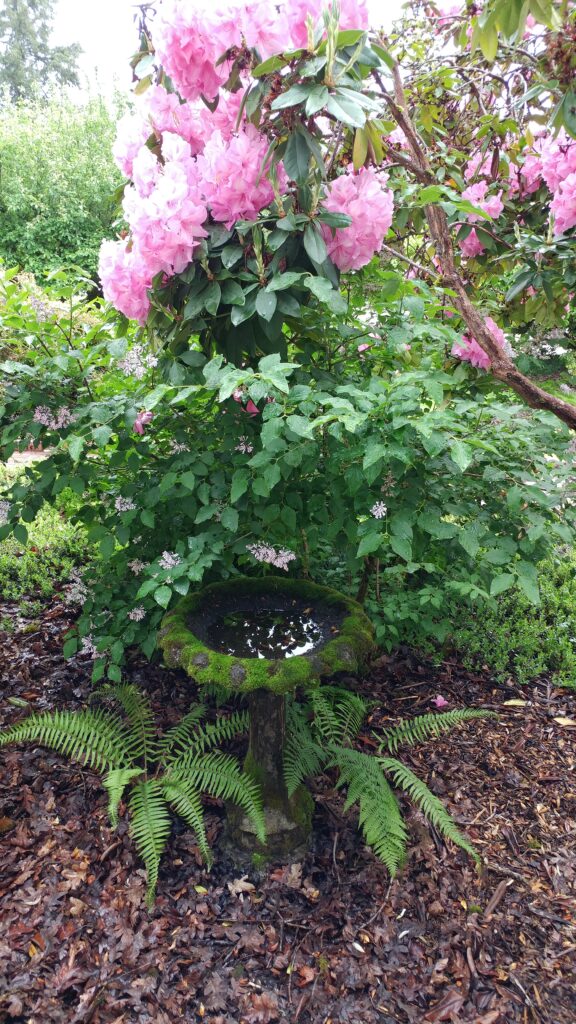
11. “And don’t invite rot by smothering the crowns of perennials”
A good arborist chip mulch is not going to “smother” anything. Perennials are quite capable of growing through several inches of woody mulch, which also protects the crowns from freezing temperatures.
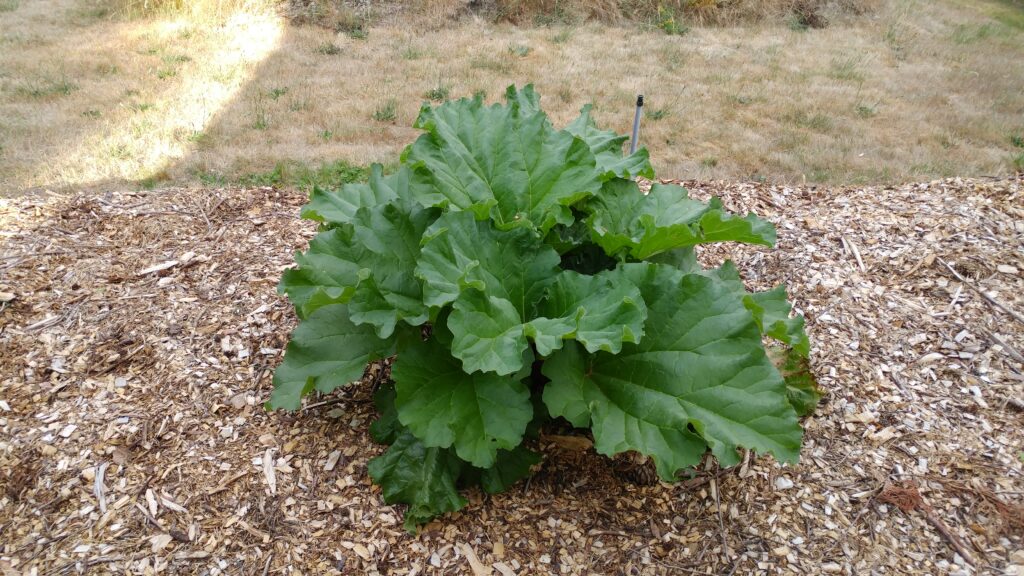
If we are going to encourage gardeners to use nature as a guide (see point #1), then points 4-11 are, well, pointless.
Literature
Chalker-Scott, L., and A.J. Downer. 2018. Garden myth busting for Extension educators: reviewing the literature on landscape trees. Journal of the NACAA 11(2).
Lehmann, J., Kleber, M. The contentious nature of soil organic matter. Nature 528, 60–68 (2015). https://doi.org/10.1038/nature16069
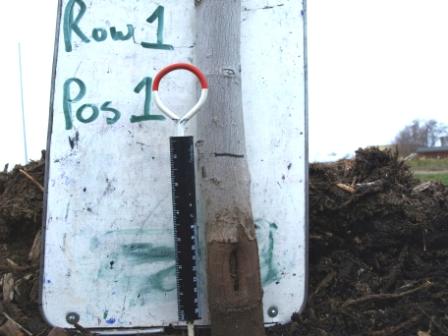
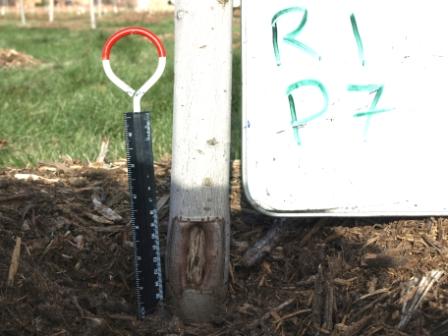
L C-S, I love these articles – once again you are our arborist mulch guru! One question – I still cringe when I see volcano mulching………is it really okay? Also – since I have been trying to replicate your advice – I have experienced weed pulling to be much easier – but weed whacking is dicier!
Appreciate your work, thanks again.
Volcano mulching is not a good practice and unnecessary unless installers are trying to hide a poor planting job. But arborist chip mulches touching the bark of properly installed, healthy trees is not going to hurt them.
I appreciate all your efforts (web, books, Great Courses lectures) to help us improve our gardens. I’m most worried about blackspot on foliage of rose bushes – should the wood chips be separated a few inches away from the stem, or does it matter? From your 2017 paper on mulching, referenced in this blog post, I thought it would be risky to keep it too close. “Keep mulch away from trunks of trees and shrubs. Piling mulch against the trunks of shrubs and trees creates a dark, moist, low oxygen environment to which above-ground tissues are not adapted. Fungal diseases require a moist environment to grow and reproduce; piling mulch on the trunk provides exactly the right conditions for fungi to enter the plant.” Thanks for your help.
The science has changed a bit since that 2017 fact sheet (which is currently in revision). To date, there is no evidence that arborist chips can cause this kind of problem. Fine mulches, such as compost and sawdust, can cause these problems.
My own mulching supports this. I use arborist wood chips around or on top of everything. I have no disease issues with woody plants or herbaceous perennials that grow through the mulch every spring.
For your roses, the wood chip mulch will reduce pathgoen splash from the ground, where spores from your black spot are located.
I’ve used arborist chips for years with wonderful results. Lately neighbors have objected to wood chip piles on my property as unsightly — it can take me several weeks to get the chips to every corner of the yard. I’ve noticed compressed bricks of coconut husk marketed as mulch and have wondered about using it to supplement the chips. Any thoughts about its effectiveness against weeds or impact on the soil?
I haven’t seen any research on coir used as a mulch. It’s pretty fine when it’s broken up and hydrated – that could be a problem as it could interfere with water and air movement.
There’s now coco chips sold by the warehouse club from Kirkland. I purchased one thinking it’s the finer textured stuff. They’re pretty similar to wood chips in texture. I assume they take longer to break down than wood chips, from what I’ve heard about palm fibers. I won’t buy any more of it because of the cost.
I don’t think they absorb water well, so they won’t have the same properties as wood chips.
One of the statements I thought you’d flag: Is that really true that urban trees are planted on top of the soil and mulch piled around them? I find that hard to believe!
Oh, yes they are. Sometimes the soil is thin and if the roots are left in the clay ball (another no-no as you know from this blog), the root ball won’t fit in the hole. Mulch is piled around to hide the fact.
Also, what do you think of the document from Brooklyn Bridge Park which is cited in Roach’s article?
I didn’t read it – I had to limit my stress level. Perhaps you could take a look and post your perceptions of it?
Hi Dr. Chalker-Scott, I really appreciate your evidence-based articles. I was wondering if you could discuss best practices for mulching when finely ground bark/leaf mulch is being used. I understand that arborist chips are best, but am not always able to use them. For example, this spring I observed finely textured mulch spread on top of Anyennia neglecta, which was unable to emerge through the mulch and looked quite stunted when I uncovered it.
Fine textured mulch can only be applied in thin layers. It won’t be enough to suppress weeds, so you will have to address weeds in another fashion.
You say never to add fertilizer (including compost) unless soil tests indicate it is necessary, but you also suggest we not waste the burst of nutrients in the fresh arborist chips. How is this burst different from putting down compost?
Very good question! The difference is that the nutrient release primarily feeds the microbes in the mulch. While some nutrients will make it through to the soil, it’s not the same volume as what compost will contribute.
Marvellous mulch-myth manifesto! My question is what to do when mulch (3″ in garden setting) gets colonized by fungal growth, which seems to fuse (or glue?) the chips together? Do I break it up, leave it or top it up with fresh mulch? Most plants seems to be able to grow through it and it still inhibits weeds. Thx.
Is it wood chips or bark? With wood chips, the wood still absorbs water so just hydrating that top layer will keep it managable (many of those hyphae are part of the mycorrhizal network). If it’s bark, it’s too hydrophobic to absorb water and it’s best to keep breaking it up.
Hi Linda. Brilliant post as always. I have two questions if you have the time. (1) I live in a part of Ireland that gets a lot of rainfall ( averages around 1100 to 1200mm a year). We have large amounts of slugs and snails that wreck havoc. Would these mollusks enjoy the comforts of the wood chips as a home and would I be increasing my problem with them?
(2) you say that arborist chip mulches touching healthy trees is not going to hurt them. How about if they were touching herbaceous perennials and annuals. Do you envisage any problems with these?
Thank you.
Thanks Will! In answer to your question, slugs and snails do not like coarse woody mulches. These mulches harbor a number of predators, such as predacious ground beetles, which feed on slugs. They don’t provide a safe harbor.
Secondly, wood chips have not been shown to harm either herbaeous perennials or annuals. I use them in both situations. Look for my earlier posts under “set your roots free” and “raised beds.” You’ll see numerous photos of my pollinator gardens and veggie raised beds.
Thank you for your reply. It’s just the answer I hoped for. I must try and track down some chips now. Nobody uses wood chips over here in a garden setting. I have seen them used as a playground surface. Shredded bark however is very popular but I know from earlier posts that it an inferior mulch.
https://app.getchipdrop.com/newrequest/
Woodchip drop site
A few follow-up questions. Please feel free to refer me to prior content if I’ve missed the answers elsewhere.
1. I was told in my extension gardener classes that the reason not to mulch against the trunk was because our local voles and other rodents would then have access to the tree bark without having to hazard being eaten by local predator birds. It is definitely a balancing act to put 4 inches of mulch everywhere except within a few inches of the trunk. I’d rather be able to put the mulch across all of the bare ground. Is the advice I’ve been given unreasonable?
2. The only mulch I can get in quantity is chipped pine bark. It comes in sizes all the way from fines to 18 inch long chunks. Most of the volume is 1”-2” chunks. It breaks down over 2-3 years and I top it off to keep at ~4 inches, or whenever I note weeds starting to come up. It does seem to keep out the quack grass everywhere but the edges. Is there anything else I need to do differently since I’m not getting the benefit of arborist chips?
3. I sometimes hand sort the pine bark to select for finer bits, and then use it to mulch my vegetable beds. It is still pretty easy to remove, it allows water through, and it regulates the ground temp and water evaporation. Is there any reason I should worry about the bark laying against the plant stems?
Thank you.
Hi Clint –
1) Nothing can tunnel in wood chips. Tunnels would collapse. Rodents are much more likely to burrow under sheet mulches, which act as a ceiling for tunnels.
2) Bark mulch is not a good choice. It does not absorb water. If you have tree services in your area, then you have access to arborist wood chip mulch.
3) Ditto answer above. I use arborist chip mulch (the finer bits) for my vegetable garden. They work extremely well and have no negative effects on the vegetables once they are above the soil high enough to mulch underneath.
I really don’t have access. The city/county manages tree trimming of power lines and public areas, but the refuse is dumped at a landfill compost site that is not open to the public. The nearest “arborist” operates over 60 miles from my area.
That’s amazingly short sighted of the city and county. If nothing else, I’d send an email asking them to reconsider this practice, which will save them money in the long run.
Try to find some wood based mulch. Bark just isn’t good material. Playground chips might be your best bet.
So interesting as I was told by an extension agent NOT to mulch with wood chips in the vegetable garden, so I took all the wood chips I’d put on there out again! But you think it’s ok?
Your agent is incorrect. Although the research is thin, there is no reason to avoid wood chips in the vegetable garden. You can see my own raised beds with arborist chips in an earlier post in the blog (just search for “rasied beds” in the search bar).
So fascinating. But I must ask a question – I wood chip mulched my vegetable garden. Before the chips, the plants grew fine (if I could keep the weeds away.) After I mulched, the plants were yellow, stunted and sickly. A friend suggested nitrogen deficiency, and indeed, and application of blood meal made everything better. So your claim that wood chips don’t cause nitrogen deficiency flies in the face of my experience! What is happening to my veggies if it’s not nitrogen deficiency caused by the wood chips? Has research found a cause for the perception? (I note that my non-veggie beds do fine, the flowers don’t seem to have a problem…just the veggies…)
Were the chips tilled in? AWC on the soil surface do not draw down soil N significantly.
Hi. If a one-year wood chip pile was highly suspected of having termites, how could the termites be organically removed and the wood chips be used close to the house? Can an amateur gardener do what you will recommend? Thank you.
Termites don’t feed on wood chips, so it’s unlikely that they would be living there.
Hi Linda. I am very excited to receive my first delivery of arborist wood chips. I filled out the chip drop form. I went outside and walked by my favorite pine tree. I noticed a blob on it ( like vomit). I was told that it is a mountain pine beetle that bored into the tree. He said he saw several more vomit like blobs further up the tree.
Now I am unsure about having 20 cubic yards of wood chips put in my yard. Can this beetle live in wood chips? Can they survive being put through a chipper and put in a tree company truck? Thank you for your help. Craig.
Don’t worry. Insects and larvae don’t survive the chipping process and if by some miracle they do, their habitat and food sources are no longer available.
Hello Carol and Dr. Chalker-Scott, It is my understanding that placing moist organic matter close to a structure will give a friendly environment for termites (and other bugs) to live in and have easy access to the structure. Is it a good idea to keep the organic material a foot or 2 away from your structures?
The problem with moist organic material next to structures is moisture coming into contact with wood and causing rot. Don’t let mulch touch wooden siding; keep it at the level of the concrete foundation. But it’s not going to attract pest insects, as there are a number of predacious beetles and spiders that colonize wood chip mulches and eat things like termites.
Hi Linda, I would appreciate your opinion on using thick layers of fresh sawdust and particularly wood shavings (that are larger than sawdust texture) on annual Winter vegetable crops and young tender shrubs in Winter and cool Spring.
I have always used chipped and shredded tree trimmings around my perennials with very positive results – but have seen some poor results when sawdust/shavings are used on young perennials and annual vegetable crops, particularly winter crops.
I provide Certified Organic Consulting services and once saw several rows of Blueberry shrubs (3 years old) turn pale green with purple leaf tips within weeks when a grower decided he would use cheaper fresh sawdust/shavings in 4 inch depth rather than the arborist chunky woodchip/tree shredding I’d recommended. (Drip lines were beneath mulch and formed planting ridges – so water was not the issue).
And I’ve also seen some Winter crops like garlic and onion present yellow leaf tips when fresh sawdust and shavings are freshly applied and can’t help considering the impact of sawdust/shavings.
I almost daren’t comment – but the plant symptoms closely mimicked Nitrogen & Phosphorus deficiency and yes pH was altered by 0.5 point after application – but not into any induced deficiency range.
Thanks
Letetia
Sawdust and shavings are too fine to be used by themselves.They pack and interfere with water and possibly soil gas exchange. They need to be mixed with coarser material.
A soil test should be done to determine if there are nutrient issues.
Hi Linda,
I am a commercial garlic grower and also certified organic consultant and have successfully used tree shreddings and arborist chipping around perennial fruit tree and berry shrubs for many years with great results.
I would ask your opinion please on what you think is happening in the following story – dare I say – that I think it could be Nitrogen drawdown?
An inexperienced commercial scale Blueberry Grower substituted 4 inches of fresh (yellow) hardwood sawdust for my recommended tree shreddings / arborist chippings and almost immediately and within two weeks, the lovely green 4 year old bushes turned very yellow and many plants with purple leaves – indicating a Nitrogen and Phosphorus deficiency.
As he was progressively mulching 2 acres of bushes, it was very clear that the mulched bushes had significantly yellowed whilst the unmulched bushes were still very green. Water could not be an issue, as the drip lines were beneath the mulch.
When pH tested at 3 inches, the pH showed a 0.5 point difference from the unmulched rows.
I understand it has now been proven/accepted that woodchips and arborist chippings don’t cause deep soil nitrogen drawdown (only minor levels at soil surface) – but the fresh sawdust impact was very immediate and notable and did mimic Nitrogen deficiency.
Is it the instance the tree shreddings and arborist chippings don’t cause deep soil Nitrogen drawdown impacts – but fresh deep sawdust will?
Sawdust on the soil surface doesn’t draw down N but it does pack and interfere with water movement. Sawdust particles are too fine to be used on their own, they should be mixed with coarser material.
A soil test should be done to determine if there are nutrient changes.
Hi Linda,
I am a long time follower, gardener, and grounds keeper. Thank you for all your research and valuable knowledge.
A few questions. I live in an arid, short grass prairie environment and have started using arborist wood chips both at work and in my home garden. Are wood chips still an appropriate mulch in dry environments? Are arborist wood chips a good mulch for prairie vegetation or should I consider an alternative?
Thank you for your time!!!
Yes even more so, because they protect the soil surface from heat and drying out. Always irrigate through the chips not under them.
Hello: I just came across your site and appreciate the science behind your recommendations. I have a couple of questions about mulching: When using wood chip mulch, do you just keep putting new mulch on top of old mulch each year? Or should old mulch be removed before adding the new? Also, one year we had artillery fungus that got all over our house and car, and when researching that, we found sources that said it harbored in wood chip mulch — what does your research say about this and how to avoid it? Thank you.
Yes, you just put the new chips on top. The bottomw layer eventually becomes a compost layer.
Artillary fungi are harmless – just a nuisance and really rather uncommon. To prevent spore formation, just keep an eye out for the fruiting bodies and remove them before they form and release spores.
I live in the Boston area and recently the highly invasive Asian Jumping Worms have been showing up in massive quantities in gardens everywhere. I suspect they may be being moved around in loads of compost and leaf mulch as well as in garden plants from commercial growers that are storing pots on the ground. I would think that arborist wood chips would be a safer alternative to compost and leaf mulch to avoid transferring these invasive worms and we should be doing more to encourage their use. Would you agree?
Yes, arborist wood chips are not a good environment for these worms as they don’t provide decomposed material that they can easily ingest.
Hi! I found your site looking for information on whether I should put cardboard or paper under my arborist chips and I’m super glad I did! I’ll cut them both out and just do chips. I have a question though.
There’s a spot in my yard that is essentially a weed lawn. I don’t want to put any chemicals down, or anything that won’t rot, and I don’t want to dry out and kill the soil with tilling or something. I also don’t particularly want to pull all the weeds up by hand. My thought at this point is to mow them as short as I can and then put paper over them, just to smother them some while the paper rots under the arborist mulch I also plan to put down at that time. But do you think just mulching will be enough to kill an established weed bed?
Scalp the weeds and pile the chips on extra thick in those areas.
No paper please.
Hi Dr. Chalker-Scott. I know I’m late to the party here, but am wondering what you think about the emphasis on “ramiel wood chips” coming over from the UK and infesting garden sites here in the US? Personally, I love how the definition of them changes from one writer to another – quarter-inch twigs and leaves from one person to 4 inch logs from another. One Brit writer even specified that only specific woodies can qualify (alder, if I remember correctly) and that conifers are “right out”. Seems like it’s just another way to make a ton of money from gardeners.
Ramial wood chips are basically what we call arborist chips on this side of The Pond. They tend to be made from small and medium size branches but that’s determined by chipper size.
Deciduous and evergreen chips are both acceptable to use as mulch. Be sure to use them only on the soil surface, don’t till.
Why purchase them when they’re usually available for free, or almost free here in The States?
Not sure what you mean by “infesting garden sites here in the US.”
A recent Oregon State extension post suggested nitrogen depletion in the top 3”-6” of soil covered with mulch (if using wood chips, sawdust and bark dust). Is that just the fine materials?
https://extension.oregonstate.edu/catalog/pub/ec-1629-mulching-woody-ornamentals-organic-materials?utm_campaign=Gardening_Newsletter&utm_medium=email&_hsenc=p2ANqtz-9UHDkfC9Uo8i2LKpKcJ1q_7g2pvalL8200qgfb99ggFVYWWEzhAijYGT6z7Zlhmo7RaLWD-uKvKcDoY8ffvvMO3YlhFw&_hsmi=313694175&utm_content=313694175&utm_source=hs_email
No, this just doesn’t happen. There is an effect on nitrogen at the interface, but it does not extend into the soil profile anhy further than the surface.